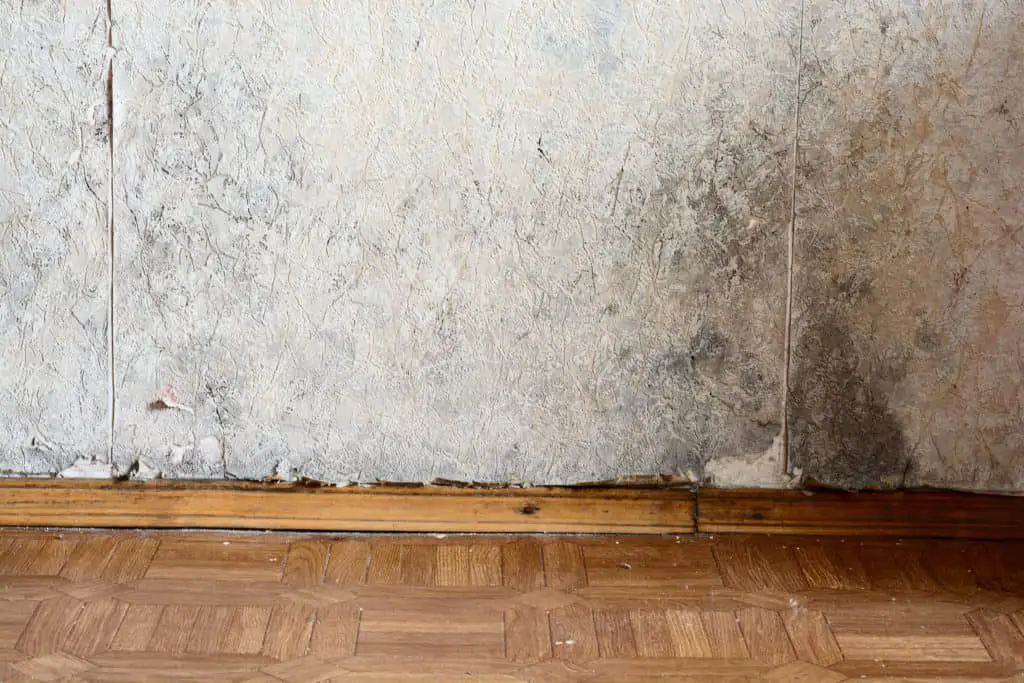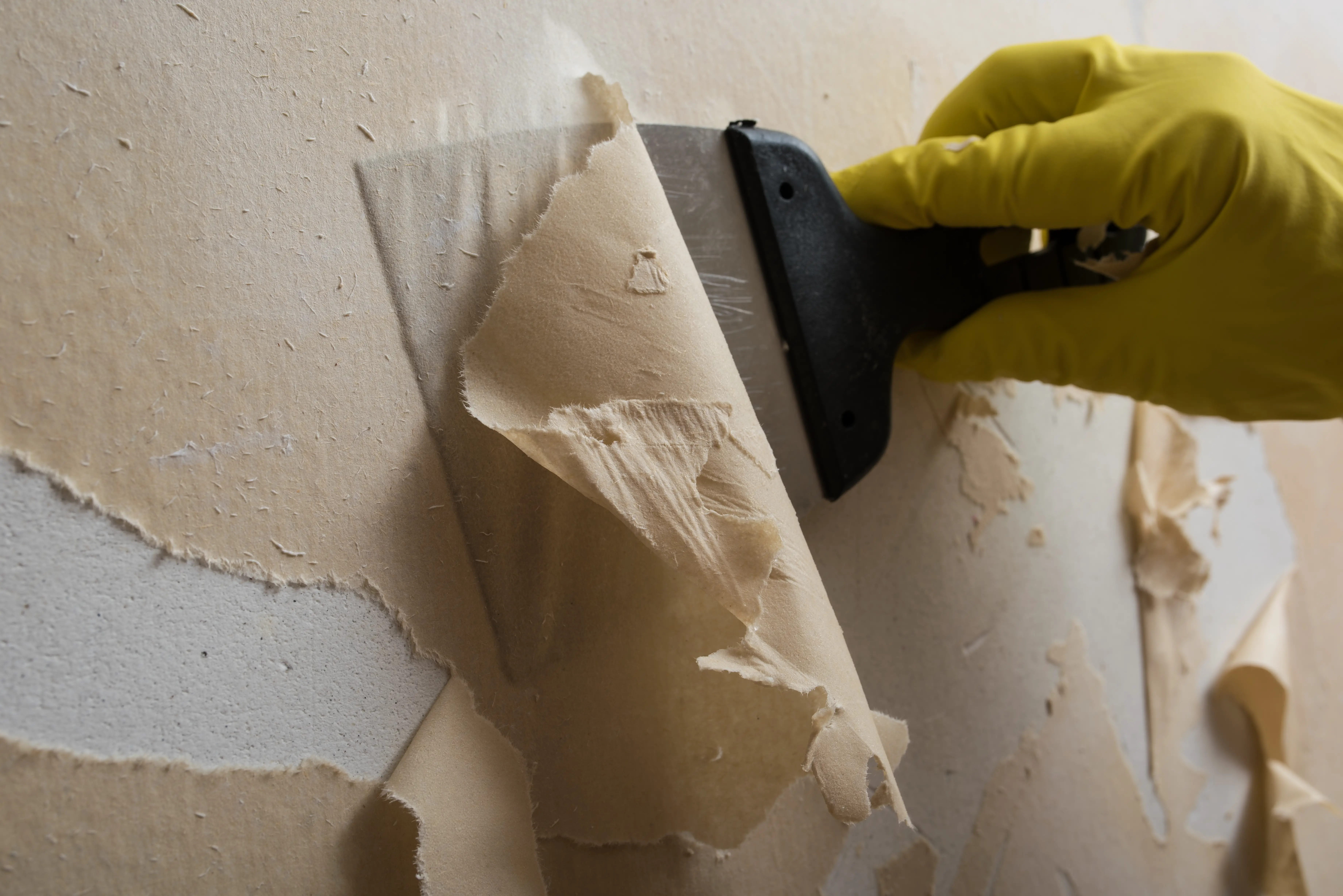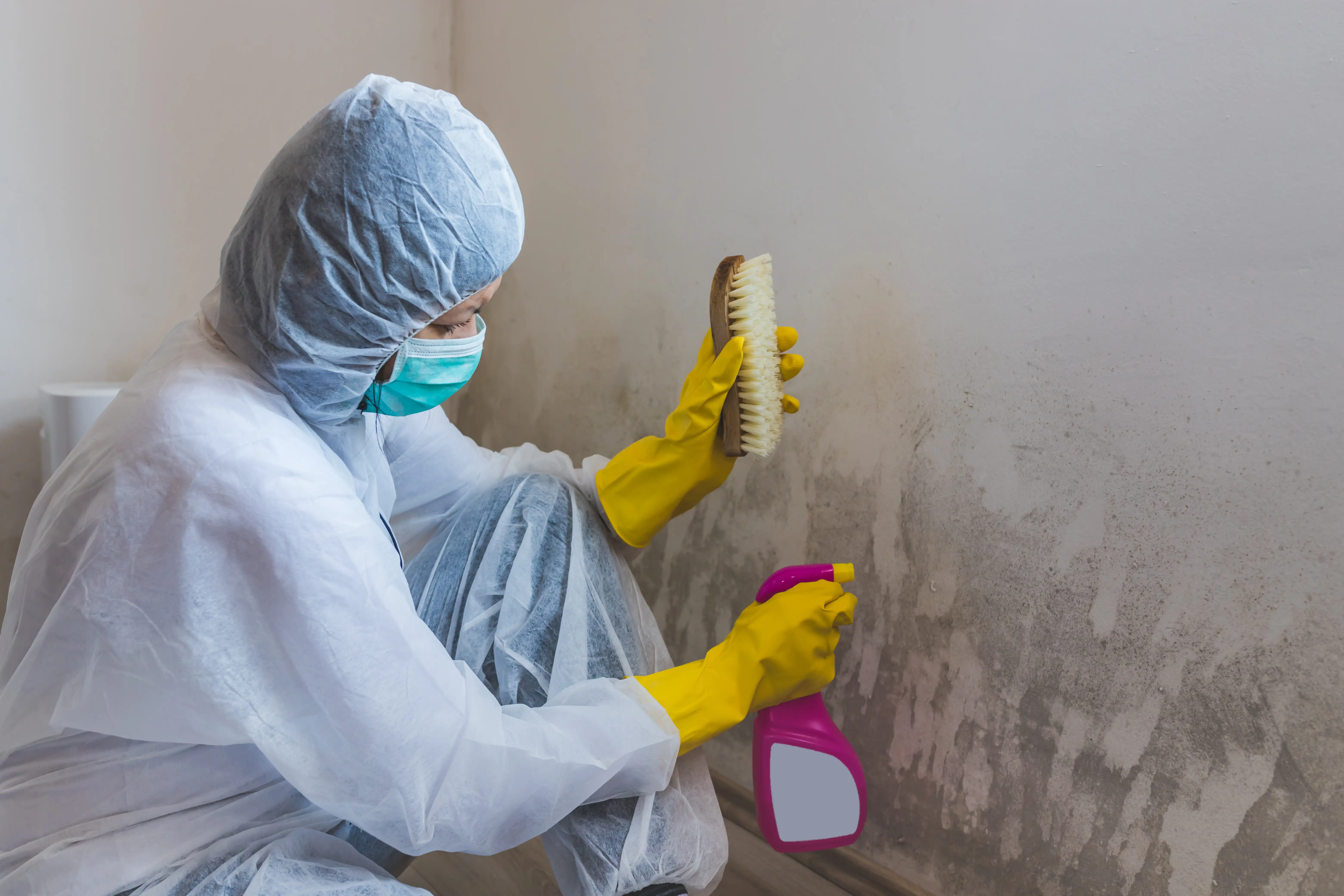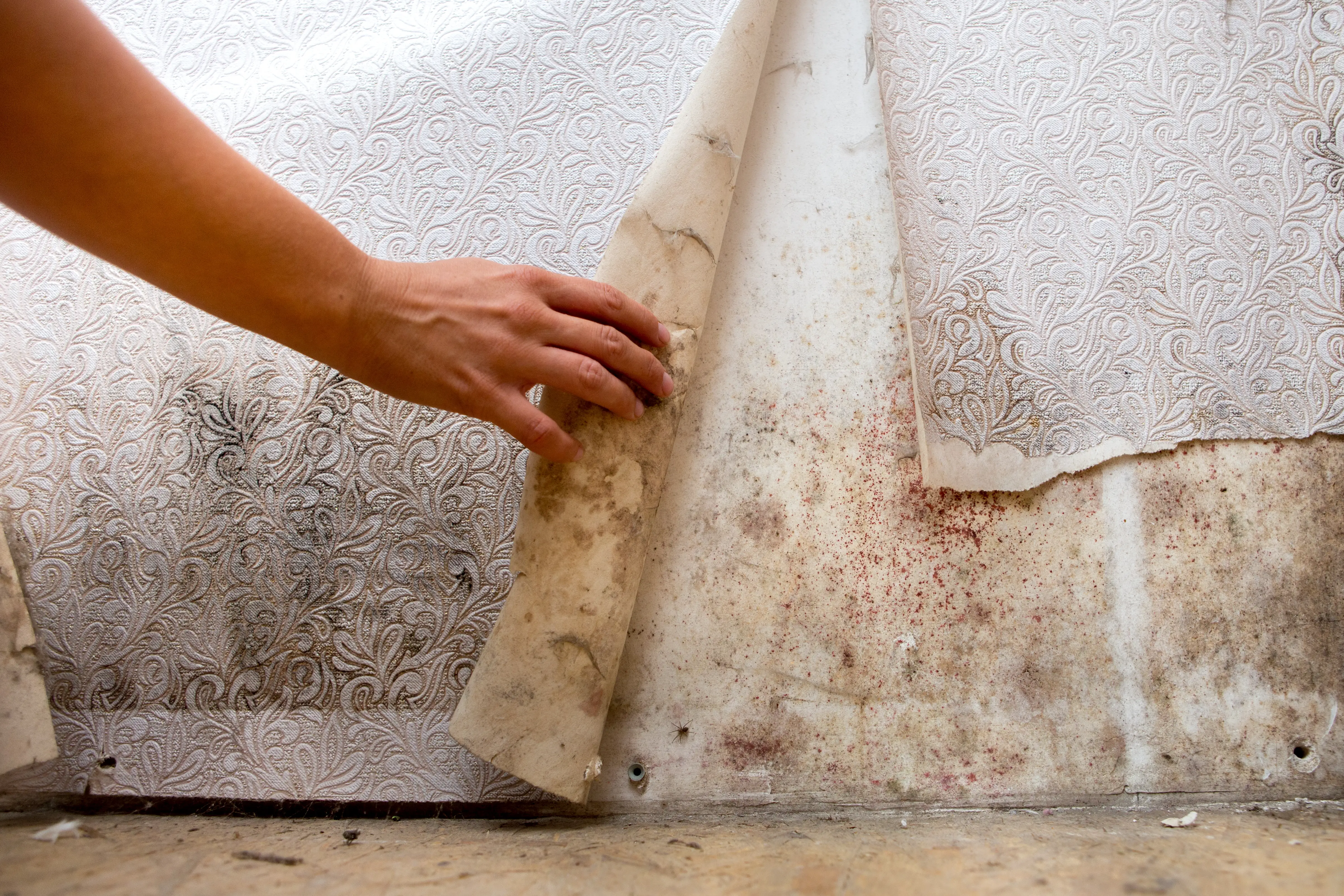
Wallpaper can be a wonderful addition to a home, effectively brightening up the walls. But, it can trap moisture in between the wall and the paper growing mold.
Mold can grow as quickly as a day and start colonizing soon after. To remove mold, be aware of the affected area, and using the proper cleaning solution, scrub the mold until it is gone. Mold will grow back if not properly removed. Mold can be dangerous for those living in the home.
Removing mold can be tough and you will want to know exactly how to do it. Keep reading to know the best way to do this.
Removing Mold From The Wall
Mold can be a serious problem, both causing damage to your home, and creating health problems for you and others. To avoid this, it is best to remove that mold as soon as possible.
Recognizing That You Have Mold
Removing mold can be dangerous, especially if you are unaware of its presence. Mold usually grows in places that you can’t see, though it is still able to be discovered. Simply be aware of smells.
If you think that there is mold growing under your wallpaper try smelling the wall, or even the outlets. If there is a musty smell like rotting leaves, this is a good sign that you have mold growing in your home.
Avoid Bleach
Before you go out and buy everything that you will need, and unknowingly make an unnecessary purchase, sit down and read this article a little deeper as I will discuss everything you need.
It is actually argued that bleach is not a good agent for getting rid of bacteria. Killing bacteria isn’t good enough, it needs to be removed.
Bleach is a combination of chemicals used as an agent to kill bacteria and whiten clothes, floors, and walls. Bleach contains sodium hypochlorite which is toxic to bacteria, fish, and human beings. In fact, the Environmental Protection Agency, (EPA) discourages the use of bleach and biocides for mold cleaning.
https://branchenvironmental.com/how-wallpaper-may-lead-to-mold/
A Cleaning Solution That Works
Instead of using bleach, trying using different, more acidic substances. The most highly recommended mixture involves white vinegar. White vinegar is mildly acidic, which means it can kill and remove mold, and can still be used on most surfaces without causing any damage. Undiluted white vinegar in a spray bottle will do the job just fine.
Its odor, which many find hard to stomach, will go away quickly after it has dried. If you can’t stand the smell, using water to remove it after all the mold is gone is ok, as long as you let the water dry.
Another substance that works well is baking soda mixed with water. The basic substance cleans quite well. Just make sure to mix a lot of liquid in, but shake well.
Discover Affected Area
Understanding that you have mold and finding that mold are each different processes. Most likely you know the general area that the mold is growing, but you don’t know the specific location or how much of the wall is contaminated.

Start by looking in places that seem to have the tightest spaces, such as behind furniture or in the corners. From these locations, peeling away a section of the wallpaper is enough to discover the mold.
Mold will typically be green or black in color, but can also be white, or even purple and orange. It is not difficult to recognize mold, due to its fuzzy appearance. It will also be a different color than the other portion of the wall.
Remove Wallpaper
Once the section of mold is discovered, begin taking the wallpaper off the wall. Using water can make this easier. Also, unless you want to completely remove the paper and paint the wall, only remove a little of the paper that can be replaced later.
The wallpaper, depending on how it was removed, might not be reusable. So it might be best to put new wallpaper up anyway or to just paint the room a new color. But before that, you have to remove the mold and before doing so, you have to let the mold dry.
This will make removing the mold a lot easier. Mold feeds off of moisture and seeing as water was just used to remove the wallpaper, letting that area dry is important. A fan blowing on the area helps with this, not letting the mold gather any more moisture from the air around it.
Wear Old Clothes To Throw Away
It is also important to wear clothes that will not be used after removing the mold. In the process of cleaning the mold off the wall, it might get into the clothing and to avoid spreading it to other areas it is best to just throw away the outfit altogether.
Also, remember to wear rubber gloves and a mask so you aren’t breathing in the spores released when you scrub away the mold.
Remove Mold From Affected Area
Now comes the fun part of the project; actually removing the mold. Using the white vinegar or baking soda solution spray the area with the mold and let it sit for a minute or so, giving the mold a chance to soak up the acidic solution.

Then using a sponge or hard brush, begin to scrub the mold, making sure to get it off the wall. Any extra solution may need to be applied as well to get all of the mold colonies off.
You need to remove all of the mold without any being left to ensure that it won’t grow back. Mold can grow from the smallest spore and will not hold back just because some of it was removed.
Make sure to dry the scrubbed area once the mold is gone. This will help keep the mold away after new wallpaper is applied. If a paint job is being applied then the wall must be completely dry and clean before that process is started. But if you are putting on wallpaper then make sure that the wall is dry before putting on the glue and wallpaper itself.
Why Mold Forms With Wallpaper
Wallpaper is held onto the wall with glue that is very good at attracting dirt and dust. It brings organic materials to it and it collects between the wall and the paper that is added. Dust and dirt are an excellent source of food for mold when it grows.
But it isn’t just the organic materials, it is also water and moisture. Water is always seeking to go to a warmer area, so the cold moisture outside the house will work its way indoors to the warmth of your home.
Normally this moisture gets evaporated off, but with the dirt in the glue, water will begin to collect and the next thing you know there is a mold problem in your wall. This is the most common way in which mold is formed under the wallpaper.
The wallpaper creates a perfect incubation zone in the walls of your home. It allows for mold to grow unimpeded until it is probably already too late. Sadly one of the most commons signs of a mold presence is the cause of an allergic reaction to those in your home.
What Is Mold?
This article has talked about mold and how to remove it and what to do when it is found. It has even discussed ways in which it is formed, but what really is mold in the first place? Why is it dangerous and what can it cause?

Mold is a fungus that grows quickly due to water absorption and dust and dirt being mixed and sitting without any hindrance of growth. Mold grows through spores that become airborne and attach to new areas, allowing it to grow quickly through a wall or even a room.
The good thing is that mold in general is not overly toxic. It may cause some minor allergic reactions, or perhaps some headaches, runny noses, and fatigue. But for the most part, mold is not going to cause serious illness or death.
A decrease in health can be a great sign that there is a problem with mold in your home. It may be the only way you find out and can actually be a blessing in disguise before any larger health issues occur.
Conclusion
Mold can be a serious problem in your home, causing health issues that if not taken care of may persist into something more dangerous. Luckily, it is rather easy to identify where there is mold and how to get rid of it.
Looking for a faint musty smell, like that of rotting leaves, is a good indicator of where some mold might be. Then simply using a white vinegar solution and a hard scrubber, the mold can be taken off quite easily. This process will remove those fast-acting spores from becoming more toxic.
Mold is a quick spore-spreading fungus that if not taken care of can become really harmful to your family members, others who may live with you, or even guests. Take care of the mold before it becomes something more, it will beautify your home and make it all the more enjoyable for those who spend time there.
